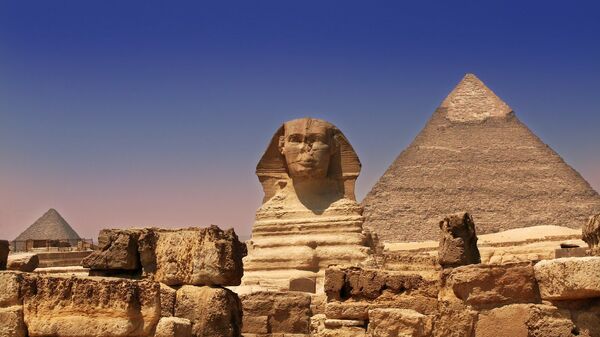It seems that a certain ancient Egyptian papyrus that deals with logistics during the reign of the legendary pharaoh Khufu, may contain more secrets when it was originally believed, the Sunday Express reports.
The document in question, the so called "Diary of Merer" that was discovered by a French mission in 2013 in Egypt, is a logbook penned by a 4th Dynasty official that details the transportation of limestone from Tura to Giza, and "most experts agree that it reveals how Pharaoh Khufu’s Great Pyramid of Giza was built over a 20-year period", the newspaper states.
However, while this consensus is apparently based on the translation of one hieroglyph, "Akhet Khufu", which is "thought to mean horizon of Khufu" and is "associated with the image of the pyramids", historian Matthew Sibson, the man behind the "Ancient Architects" YouTube channel, offered a different perspective on this matter.
"I’ve always glossed over it a bit because I thought I couldn’t give an opinion because I don’t know what everything in the diary means", he said. "But I’ve spent a while looking at the meaning of the words and what the diary says is that Merer was going to Tura, quarrying stone, putting it on a boat and taking it to a place called Akhet Khufu".
The stone was then taken to "another place which was called Ro-She Khufu" where a dyke was being built, Sibson added, noting that the document in question doesn’t say anything about the construction of the Great Pyramid, only about stone getting moved to one location.
"People think Akhet Khufu means horizon of Khufu, but that’s not what it means at all, because of various changes to the symbols. After the 5th Dynasty, the word was given a different symbol, meaning there’s not much evidence tying Khufu to one pyramid", Sibson explained.
He further speculated that the actual Akhet Khufu may reside somewhere below the contemporary Egyptian villages, ready to be discovered, though he also said he believes that that name may be referring to more than just one structure.
"I think Akhet Khufu was a whole region rather than one pyramid. I think it encompasses the Giza Plateau, then headed further to the west, where Nazlet el Semmann is, then further south past the Sphinx, all the way to the modern-day Coptic", Sibson mused. "People have been arrested for digging in their backyard there, going down and finding things. The region is bigger than what we currently see, we just don’t know enough yet."

